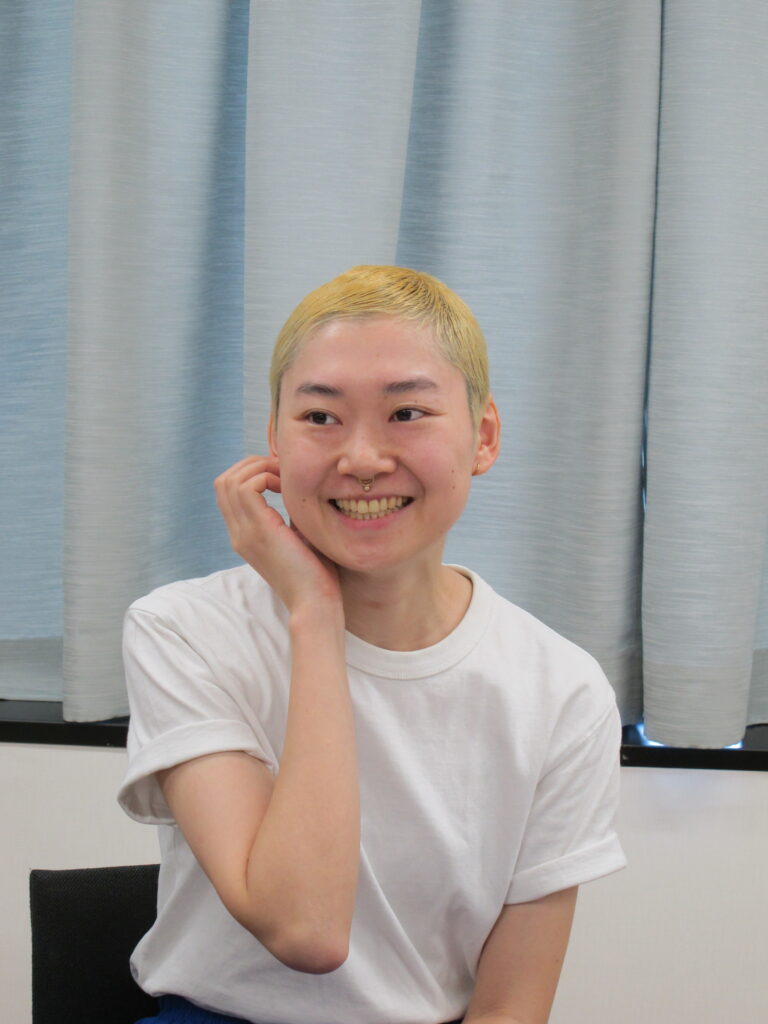
(c) Nobuko Tanaka
Note: Romance Hashimoto prefers to use They/them instead of She/her, so I follow her request here.
When Romance(Rom) Hashimoto presented her debut work “Tokyo Mystery Circle Club Band” at the Spiral Independent Creators Festival (SICF20) in Tokyo in 2019, Rom was astonished to find they won the grand prix against all-comers in that competition held to discover young talented artists.
Then, nine months later, Rom won the best artist category at the prestigious Yokohama Dance Collection’s competition for new choreographers.
And this year, that outstanding newcomer, now in their late 20s, has just staged their new work, “SYMPOSION”, at Setagaya Public Theatre (SEPT) in Sangenjaya, Tokyo.
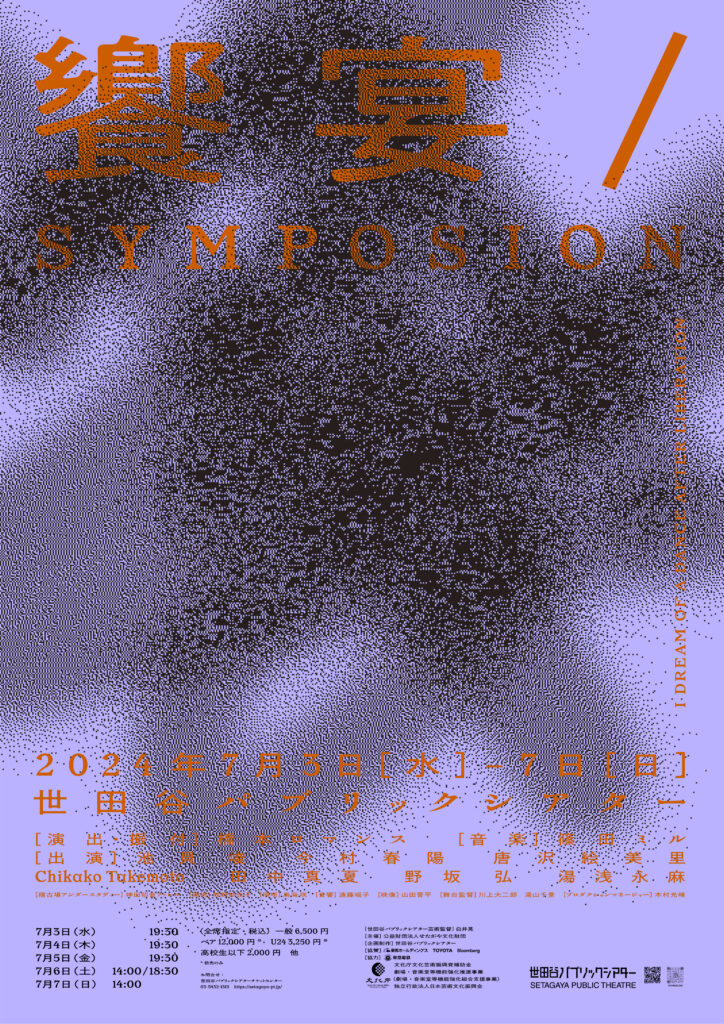
This comes after a year in which, due to the pandemic, Rom was unable to present a public performance for a year, despite an additional part of their prize from the YDC underwriting their costs of doing that.
Since 2021, though, Rom has begun to stage works in theatres in earnest, having previously only made short programs around 10 minutes long specially for competitions. Finally, too, they have had the chance to create a large-scale, hourlong work for that YDC prize’s additional performance.
Usually, the YDC has two programs — one for new choreographers’ work and another for prominent foreign artists — resulting in two winners’ prizes. But because foreign artists were absent in 2020 due to the pandemic, Rom was fortunate to be able to stage their work in both winners’ slots.
Now, looking back on those days Rom says, “When we had the chance to do the public performance, I discussed with my production staff whether we should do it or not. Because we had not been active for a year due to Covid, I was not sure whether it was safe to gather together to prepare and then present a public performance at that time. My highest priority was the safety of the dancers and others involved in the production.”
It was against that background that Rom created their first full-scale work, “Devil Dance”, which bravely and brilliantly showed the situation in which people were confronting death due to Covid — and which drew a great response from audiences and critics alike.
“We had to reduce the number of seats because of Covid, so I suppose only about 100 people saw the performance, but it was a fortuitous coincidence that the artistic director of SEPT, Akira Shirai, was one of those.
“I felt a bit embarrassed given the Covid situation, but even so I’d sent invitations to him when he was previously the artistic director of Kanagawa Arts Theatre (KAAT), as well as his successor there, Keishi Nagatsuka, as we performed at a venue very close to KAAT”, Rom says.
That meeting led to Shirai inviting Rom to do the choreography and also to dance in his work “2020” featuring the renowned actor Issei Takahashi at the Parco Theatre in Shibuya, Tokyo. After that, Shirai invited them to do a new dance piece for SEPT — which turned out to be “SYMPOSION”.
Meanwhile, perhaps in reaction to the Covid stagnation in 2020, Rom presented several new works apart from “Devil Dance”, such as “Enigma” which adapted Gidayu (a Japanese traditional music form with narration) into the dance work and “Pan”, which cast a revealing light on the difficult daily lives of today’s young people.
“Basically, contemporary dance’s audiences used to be fixed and many of them were gray-haired, middle-aged men. However, the view from the back of the auditorium was very colorful when I presented ‘Pan’ at Spiral Hall in Aoyama. There I saw there were many colorful-haired young people mixed in with ordinarily gray-haired dance lovers. Then, I thought that was a different and interesting phenomenon and I was excited”.
At the February press conference for SEPT’s upcoming year’s program, Rom explained about their new work “SYMPOSION”, saying, “Since the Palestinian attack in October, I have considered how to use my artistic creativity effectively to respond to these current affairs. As the answer to that question, I decided to show issues that have been made invisible in this society — i.e. overlooked as if they don’t exist”.
Then they continued, “With the ancient Greek philosopher Plato’s ‘The Symposium’ in mind — a work in which intellectual men in Athens made speeches about love one after another — as the subject of ‘SYMPOSION’ I wanted to consider what kinds of people would attend such a ‘symposium’ if it were to be held in Tokyo in 2024.
“I also wanted to examine what kinds of love would be discussed there, and whether there is a place where we can talk about love safely in today’s Tokyo or not.
“And I wanted to take a critical or skeptical view of Plato’s ‘The Symposium’, not just follow those ideas.
“I had actually had this idea of using ‘The Symposium’ since I read it in 2022. I felt it was somehow grotesque since there are only a few privileged intellectuals discussing love. So my creation started with a very critical view of that format because I think there is almost no meaning to that discussion involving just a few select people.”
Then, returning to their theme of what’s invisible in today’s society, Rom continued, “I believe the people who are invisible in society should take the chance to speak about love — though I don’t think there’s anywhere to talk about love safely in this country anymore.
“It’s so ugly to so often see situations in which people discriminate against minorities through such things as homophobia, trans-hate and racial-profiling … these people are treated as non-humans in today’s Japan. For the same reason, I don’t think we can ignore the things happening in Palestine.
“So I was wondering how I could effectively use this precious chance to express my thoughts this time.
“I wanted to concentrate on that point, in other words: What do I say with this work to today’s audiences? As I’m still creating it together with my dancers and staff, I can’t promise but I do want it to include the issue of Palestine, if the others agree with me.”
For this project, Rom says they invited people with whom she especially wanted to talk and work together to be part of it.
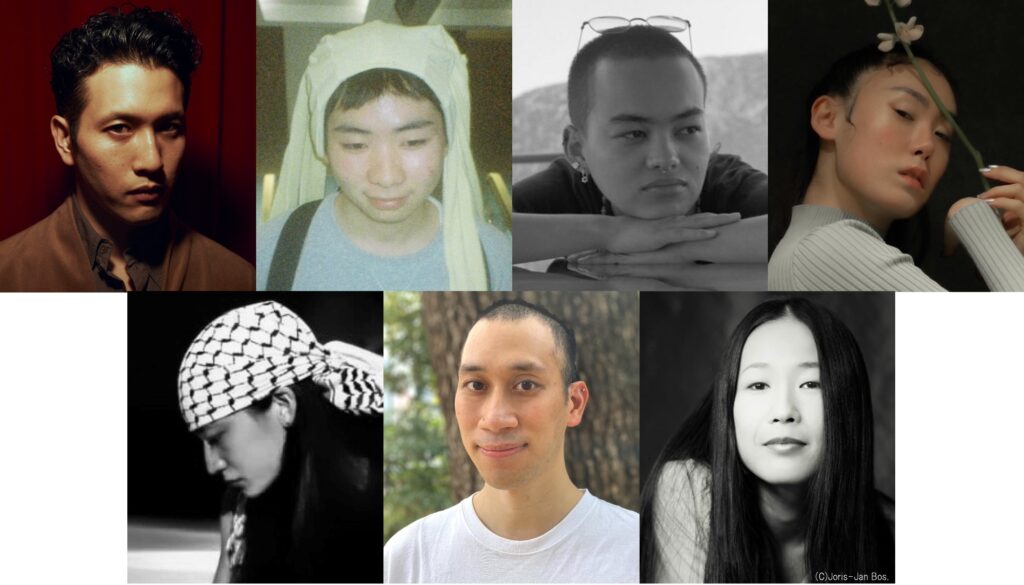
Performers of ‘SYMPOSION’
As a result, the production also involves the professional dancers Chikako Takemoto, Manatsu Tanaka and Ema Yuasa, the actor Hiroshi Nosaka and the musician Shun Ikegai, as well as Haruhi Imamura, an MA student at Tokyo Art University, and the multi-media artist Emiri Karasawa. In addition, as the production’s music director, Romance appointed Miru Shinoda, who works with Ikegai in a band called yahyel.
“I hope they use this dance work for their own benefit as much as possible”, Rom says. “So I don’t want them to just do as I say and choreograph; I want to let them try anything they want and I believed the people I asked would actively propose their own ideas in the rehearsal studio.”
Usually one to two months before studio rehearsals are set to begin, Rom has meetings with their performers so they can talk casually and get to know each other. Then, armed with their impressions and feelings from the meetings, Rom decides each artist’s role and constructs and choreographs the piece with every movement carefully pictured in their notes — unlike many choreographers who only give movement directions verbally during studio sessions.
“We started rehearsals with everyone in June, but my choreography plan was completed in May in my notebook. Then, I proposed the plan to my team as my idea and by about a week later we had developed an overall dance form for the work. Afterwards, each performer’s body feeling adds to the plan, and we incorporate such new ideas into the piece together.
“I know some choreographers have a way of creating a work with other dancers from nothing. However, if I adopted that style I don’t think I would be doing my duty or taking my responsibility as the director.
“So, first I showed my plan and ask the members’ for their opinions and reactions. Then we start to create the work together. I think by providing my framework at the beginning, everyone can be free and they can safely use their creativity.
“The reason why I create dance, and why I work as an artist, is because I value above all else the moments when people are challenging themselves and when I can see their courage. So I’m not interested in extreme dance technique; I’m more interested in how the person/dancer has changed after the performance. I don’t think there’s any point doing any performance without such mutation.
“Consequently, I feel hopeful for one of my works if I can make changes in a person through my dance creation. I believe that the performers and also the audiences feel something in their hearts when they see a person trying to change on a live stage.
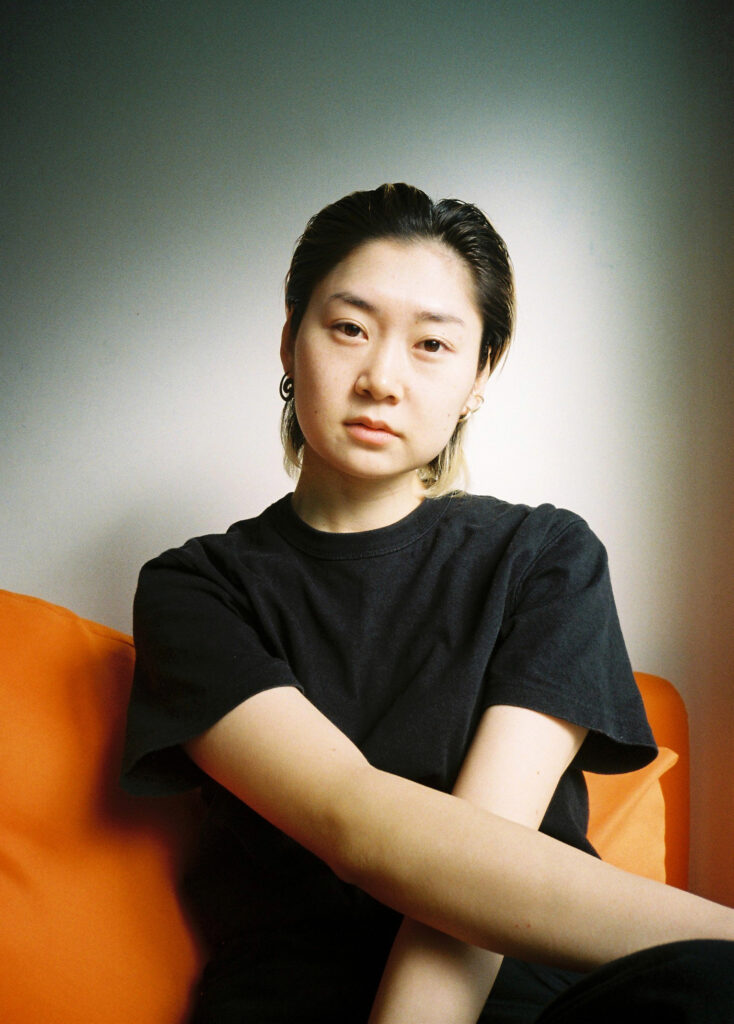
Photo courtesy of SEPT
“The reason we do performance is because we want to change something, change it to a new phase. I’m sure we can only make change happen through live performance, and I believe that’s its real thrill”.
Finally, Rom told audiences their message: “Probably some people think ‘What’s this?’ or feel uncomfortable when they see ‘SYMPOSION’, but if so I’d like to ask them to reflect on why that is.
“This may be more difficult to watch than many dance pieces staged at SEPT before. For example, audiences may feel ‘What do they want to tell us?’ or ‘What should I be seeing in this?’ because this work’s purpose is not to display aesthetic or advanced dance technique. So there and then I want audience members to think again why they feel uncomfortable. I want them to ask themselves: ‘What kind of things make them feel non-ordinary’; ‘What are they expecting to see in this theatre’. And I really hope I can create an occasion making them think again about these things”.
Having discarded the given name in favor of Rom(ance) to break out of their “good-mannered kid” image when they were a high-school student, this groundbreaking choreographer is now asking about love from the viewpoint of Japan’s “socially invisible” people with this, their latest production, “SYMPOSION”.
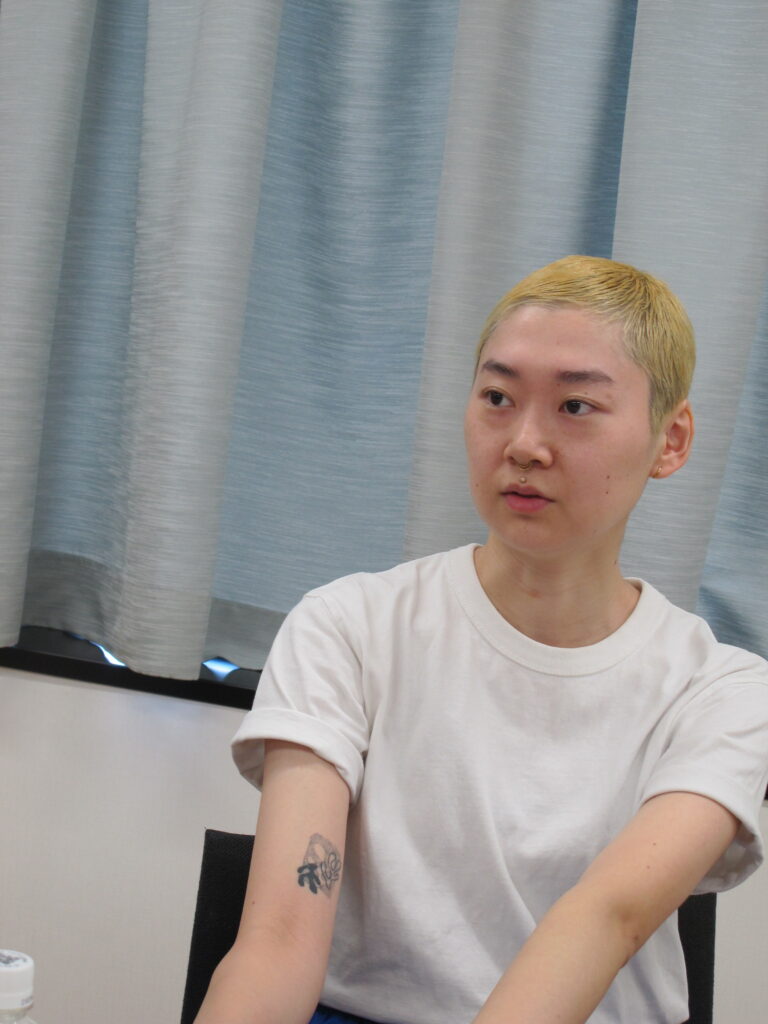
(c) Nobuko Tanaka
“Kyōen/SYMPOSION” ran July 3-7 at Setagaya Public Theatre in Sangenjaya, Tokyo.

